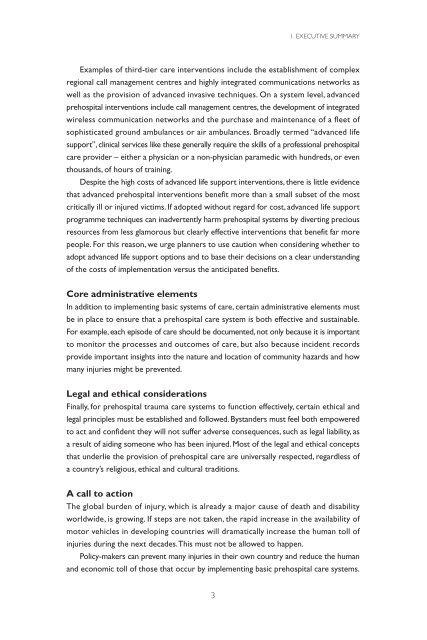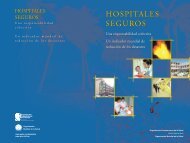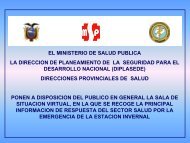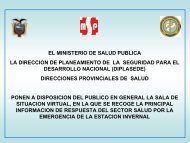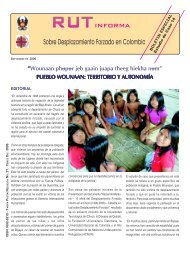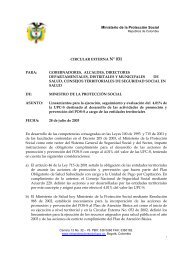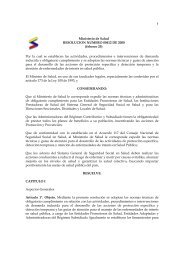Prehospital trauma care systems - World Health Organization
Prehospital trauma care systems - World Health Organization
Prehospital trauma care systems - World Health Organization
Create successful ePaper yourself
Turn your PDF publications into a flip-book with our unique Google optimized e-Paper software.
1. EXECUTIVE SUMMARY<br />
Examples of third-tier <strong>care</strong> interventions include the establishment of complex<br />
regional call management centres and highly integrated communications networks as<br />
well as the provision of advanced invasive techniques. On a system level, advanced<br />
prehospital interventions include call management centres, the development of integrated<br />
wireless communication networks and the purchase and maintenance of a fleet of<br />
sophisticated ground ambulances or air ambulances. Broadly termed “advanced life<br />
support”, clinical services like these generally require the skills of a professional prehospital<br />
<strong>care</strong> provider – either a physician or a non-physician paramedic with hundreds, or even<br />
thousands, of hours of training.<br />
Despite the high costs of advanced life support interventions, there is little evidence<br />
that advanced prehospital interventions benefit more than a small subset of the most<br />
critically ill or injured victims. If adopted without regard for cost, advanced life support<br />
programme techniques can inadvertently harm prehospital <strong>systems</strong> by diverting precious<br />
resources from less glamorous but clearly effective interventions that benefit far more<br />
people. For this reason, we urge planners to use caution when considering whether to<br />
adopt advanced life support options and to base their decisions on a clear understanding<br />
of the costs of implementation versus the anticipated benefits.<br />
Core administrative elements<br />
In addition to implementing basic <strong>systems</strong> of <strong>care</strong>, certain administrative elements must<br />
be in place to ensure that a prehospital <strong>care</strong> system is both effective and sustainable.<br />
For example, each episode of <strong>care</strong> should be documented, not only because it is important<br />
to monitor the processes and outcomes of <strong>care</strong>, but also because incident records<br />
provide important insights into the nature and location of community hazards and how<br />
many injuries might be prevented.<br />
Legal and ethical considerations<br />
Finally, for prehospital <strong>trauma</strong> <strong>care</strong> <strong>systems</strong> to function effectively, certain ethical and<br />
legal principles must be established and followed. Bystanders must feel both empowered<br />
to act and confident they will not suffer adverse consequences, such as legal liability, as<br />
a result of aiding someone who has been injured. Most of the legal and ethical concepts<br />
that underlie the provision of prehospital <strong>care</strong> are universally respected, regardless of<br />
a country’s religious, ethical and cultural traditions.<br />
A call to action<br />
The global burden of injury, which is already a major cause of death and disability<br />
worldwide, is growing. If steps are not taken, the rapid increase in the availability of<br />
motor vehicles in developing countries will dramatically increase the human toll of<br />
injuries during the next decades.This must not be allowed to happen.<br />
Policy-makers can prevent many injuries in their own country and reduce the human<br />
and economic toll of those that occur by implementing basic prehospital <strong>care</strong> <strong>systems</strong>.<br />
3


